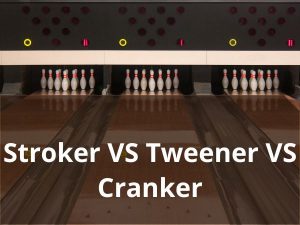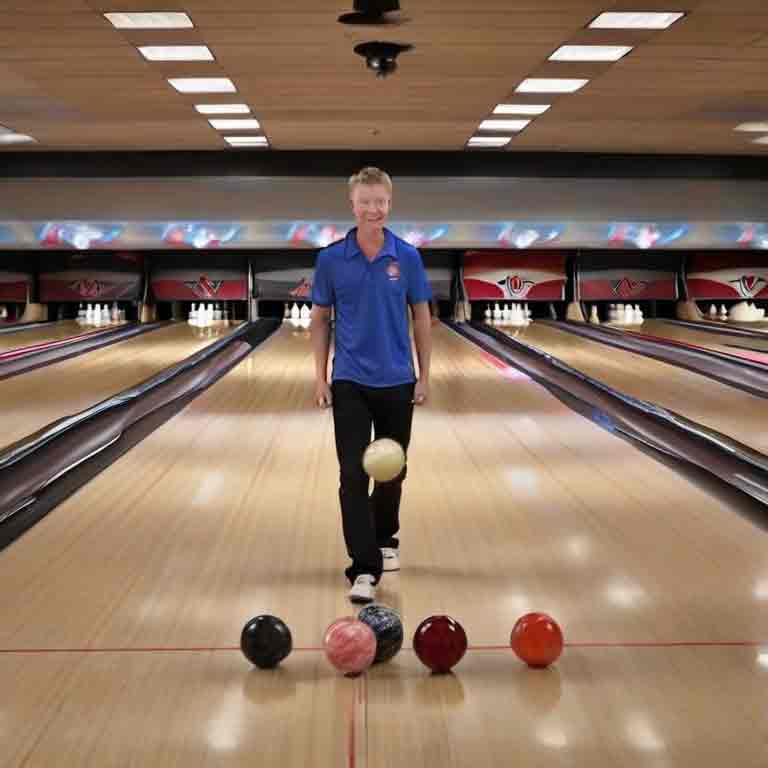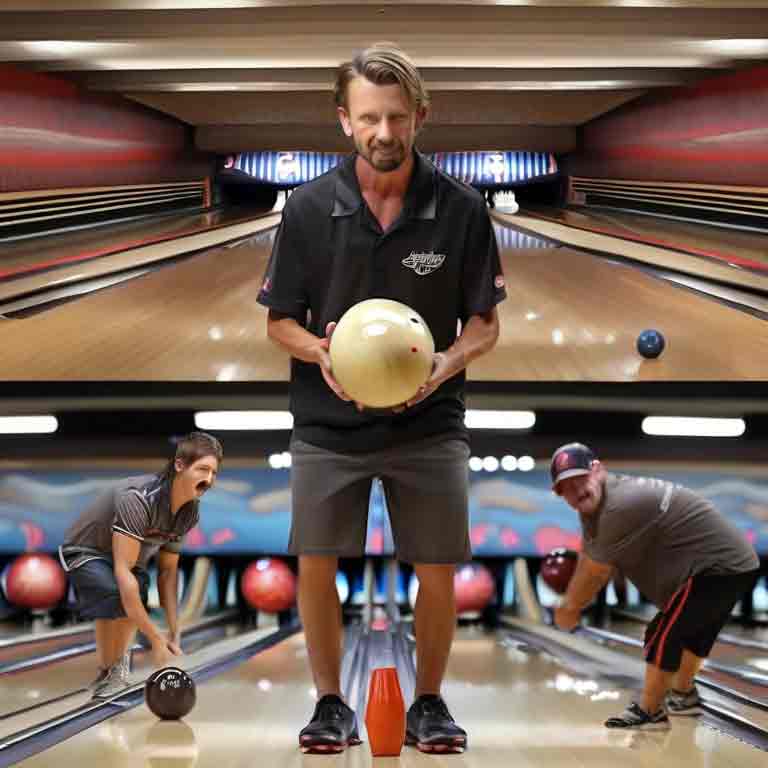Stroker Vs Tweener Vs Cranker: Differentiate Your Bowling Form!
Stroker Vs Tweener Vs Cranker! Believe it or not, every bowler has their own bowling style. We categorize some similar and particular ways of bowling into a specific type. Out of all the widely accepted forms of bowling, Stroker, Cranker, and Tweener are the most common ones used by competitive bowlers.
Bowlers like amateurs, professionals, internationals, seasonal, and youth players follow one (or a mix of two) of these delivery techniques. So as a bowler, what style of bowling do you have? How do you find out your bowling style— Tweener, Cranker, or Stroker? Let’s learn a little about each of them, shall we?

How do you know what type of bowler you are?
Bowlers all over the world, from beginners to professionals, should be aware of the type of bowling style they fall into. When you understand the type of bowler you are, it will help you develop better as a bowler, gain skills, and choose the right bowling ball with the right layout. Let me paint a clearer picture of tweeners, crankers, and strokers, and how each bowling style gives bowlers the advantages they need.
Stroker:
Stroking is by far the most common conventional bowling form among competitive bowlers. By definition, when right-handed bowlers start from the middle of the lane and slowly move to the right, (and left-handed bowlers move to the left side of the lane), and roll their bowling ball in a straighter line with enough control over the ball, accuracy, and finesse, this is when you call it the stroker style bowling.
To know whether you’re a stroker or not, first, you gotta find out your rev rate. If it is around 300, then you can look at other characteristics to be sure about your bowling style. Do you put a lot of spin on your bowling ball? Is your arm swing low-medium? Let me guess, you also don’t cup the wrist during release, do you? Do you rely more on the accuracy of your ball that its speed and power? If “Yes” is the answer to all of these questions, you’re definitely a stroker!
With finesse and accuracy, strokers can successfully bowl a lot of strikes. The main factor behind strokers getting perfect strikes is the precision in ball placement. If you look at PBA Hall of Fame pro bowlers like Norm Duke, Walter Ray Williams Jr., Dick Weber, and David Ozio, you will notice they are clearly some good strokers. If you notice any similarities between their bowling action with yours, there’s a big chance you’re a stroker.

Cranker:
Next, we have the crankers! They are the ultimate power-dependant bowlers who position themselves a little on the outside (right-handers stand farther left and left-handers stand farther right) and play across the lane. Crankers depend on cupping their wrists during throws and generate significant speed and power.
To know whether you’re a cranker or not, first, check out your rev rate. Is it between 350-370 or more? Chances are, you’re a cranker because you impart lots of revolutions on your ball. Players who bowl in the cranker style intend to hook their bowling ball in sharper and bigger angles with tremendous power and speed. This technique hits the pins like a truck!
Crankers bowl extra-carefully. Why? Because it is a less controllable and powerful style of bowling. And so, it’s not everyone’s cup of tea. Because, crankers bowl with a fair share of risks of rolling the ball into the gutter or getting some scary splits due to wrong pocket hits, many tend to avoid this style and try to switch to a tweener or stroker.
If your bowling ball has exceptional high speed and power, it’s because of your medium-high armswing which is a common trait among crankers. Cranker-styled bowlers rotate their positive axis point more than strokers. This makes the ball face them instead of them staying behind the ball. The high number of revolutions imparted on the ball is perpendicular to the surface of the lane. The high rev rate is what gives the ball its high hooking power.
If the majority of these traits seem relatable to your bowling style, you might be a cranker. Another way to verify whether you’re a cranker or not is to observe cranker bowlers like Jim Godman, Ryan Shafer, Bob Learn, Jr., Bob Vespi, and Kelly Coffman.
Tweener:
Lastly, we have the genius Tweeners. Bowling in the tweener style is one of the most interesting bowling forms out there. While a stroker has less than 300 RPM and a cranker has more than 370 RPM rev rate, tweeners fall right in between these two styles of bowling. So basically, tweeners have traits of both crankers and strokers.
If you have read the previous two types of bowling forms and found some similarities in both of them, your bowling style represents a mixture of the stroker and cranker styles of bowling. Tweeners are by far the most versatile bowlers because they can adapt to any situation, even though they are more likely to make mistakes during adjustments. But nothing a bit of practice cannot fix.
From my experience and observations, the tweener bowling style comes with a fair share of advantages. You get to be more consistent with your shots which will eventually lead to more success hitting the targets. But how would you exactly label yourself as a tweener?
Well, do you think you have a high rev rate? Wait! Don’t jump to a conclusion yet. Similarly, if you have a low rev rate, don’t consider yourself a stroker, not yet. If you have a high rev rate which is a trait of the crankers, and a low-medium armswing, which is a trait of the strokers, congratulations, you’re a tweener bowler. Now, what if you have the opposite traits? Well, if you have a medium-high armswing, and a low rev rate, you will still be a tweener.

Differences between Stroker, Cranker, and Tweener
The biggest difference between strokers, crankers, and tweeners is how many revolutions their balls have. Then comes the ball speed. Some bowlers have fast and some have slow ball speed. Another big difference is the amount of hook that is used by the bowlers to get their ball to the pocket.
Strokers have a rev rate of around 300 RPM which is the lowest among the other two types of bowlers. Crankers can have a rev rate up to 370 RPM (or more than that in some cases). The tweeners can have a rev rate anywhere between 300 RPM to 370 RPM.
Strokers have a medium ball speed, whereas crankers tend to generate a lot of speed. Tweeners can either have a low, high, or medium ball speed. Another thing you will notice about strokers is that they are always on time. That is one step they follow strictly. For crackers, the timing is a lot later than most other bowlers. Tweeners have the flexibility in time management.
Strokers have a medium armswing during their approach. Oppositely, crankers have medium to high armswing. Tweeners can have either of them. But what bowlers have the highest consistency in hitting targets? In terms of risks, crankers play with a great amount of risk. The probability of getting splits is a lot more for these bowlers.
In terms of ball travel on the lane, strokers always keep their shots as straight as possible. Crankers, on the other hand, use almost the entire lane. That’s why strokers show the best performance on longer patterns, and cranks do their best on short-medium patterns. Nothing’s too troubling for tweeners. They can bowl in either pattern. And as for hooking or shooting straight. They can do both, of course, after making a few adjustments.
FAQs Of Stroker Vs Tweener Vs Cranker!
What are the main differences between cranker, tweener, and stroker styles?
- Cranker: Focuses on high rev rates and power, often utilizing a high backswing and a deeply cupped wrist to generate significant hook and speed.
- Stroker: Emphasizes control and precision with a low rev rate and a smooth delivery. This style is known for its elegance and effortless appearance.
- Tweener: A hybrid that combines elements of both the cranker and stroker styles, offering versatility. Tweeners can adjust their game for more power or control depending on the situation.
How do these styles impact bowling ball selection?
Bowling style significantly influences the choice of bowling ball. Crankers might opt for balls that maximize hook and power, strokers prefer balls for control and consistency, and tweeners look for balls that offer a balance of control and hook potential.
Can a bowler switch styles, or should they stick to one?
While bowlers can experiment with different styles, mastering the techniques of each style takes time. A bowler’s style often becomes a defining characteristic of their game, emphasizing suitability, comfort, and performance maximization.
Are there famous bowlers associated with each style?
- Famous crankers include Mark Roth, who was known for his powerful strikes and high rev rates.
- Notable strokers include Walter Ray Williams Jr. and Norm Duke, known for their finesse and accuracy.
- Tweeners and power strokers like Pete Weber (PDW) are known for blending smooth delivery with the power and hook of cranker styles.
How does lane condition affect the choice of style?
Lane conditions play a significant role in how a bowler chooses to play. Crankers may perform better on heavily oiled lanes due to their ability to generate high hook potential, while strokers might find more success on lanes where control and precision are paramount. Tweeners have the flexibility to adjust their style based on the condition of the lane, making them versatile players in various conditions.
Conclusion
So what form of bowling do you have? Are you a stroker, a cranker, or a tweener? Once you find that out I hope you can understand the differences between these bowling styles. But is there any advantage in one particular style? No, nothing special. They are all equally good. Doesn’t matter if you are a cranker, stroker, or tweener, as long as you are well-skilled you have nothing to be afraid of. So keep working on your current bowling style and try to have a better average score. Good luck and best wishes for your future endeavors!

Passionate Bowler and Bowling Enthusiast
Jess Pinelli is a dedicated bowling enthusiast with a deep love for the sport that spans over 6 years. With numerous strikes, spares, and a few gutter balls under hes belt, he has honed his skills on lanes across the country. Pinelli’s journey in the world of bowling has been a remarkable one, from casual weekend games with friends to competitive league play and even a few local tournaments.
Driven by her passion for the game, Pinelli decided to channel her expertise and knowledge into the digital realm, becoming a prolific author on this bowling website. She’s your go-to source for everything bowling-related, from mastering the perfect hook to choosing the right bowling ball and even navigating the world of bowling etiquette.
When she’s not busy writing informative articles or reviewing the latest bowling gear, you’ll likely find Pinellis at her favorite local bowling alley, helping newcomers improve their game or enjoying some friendly competition with fellow bowlers. She firmly believes that bowling is not just a game but a community, and she’s committed to fostering that sense of camaraderie both online and offline.
